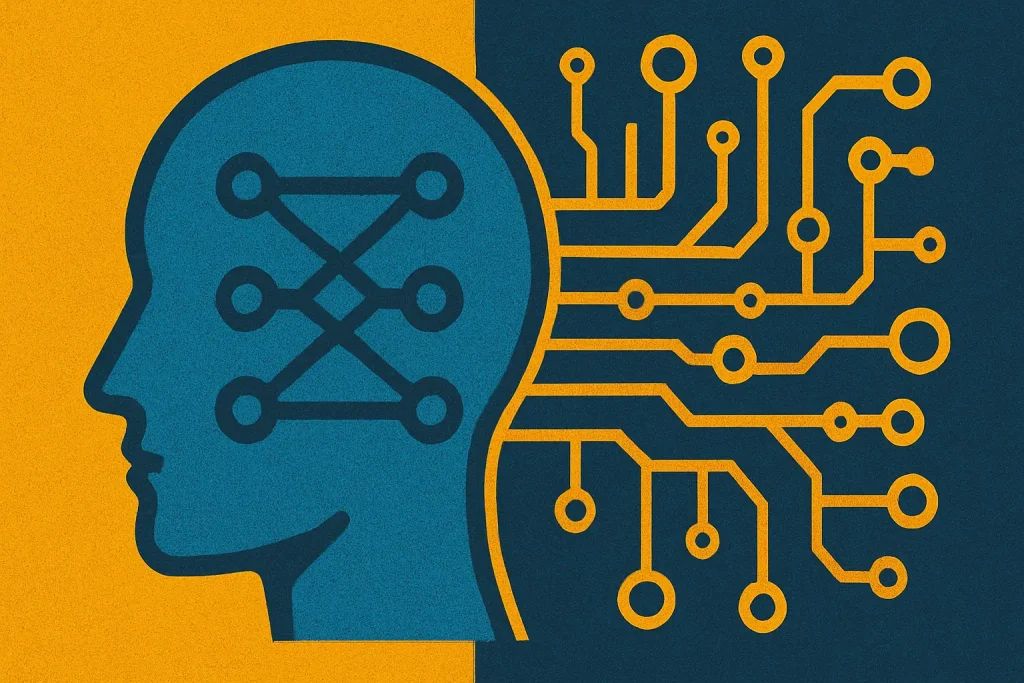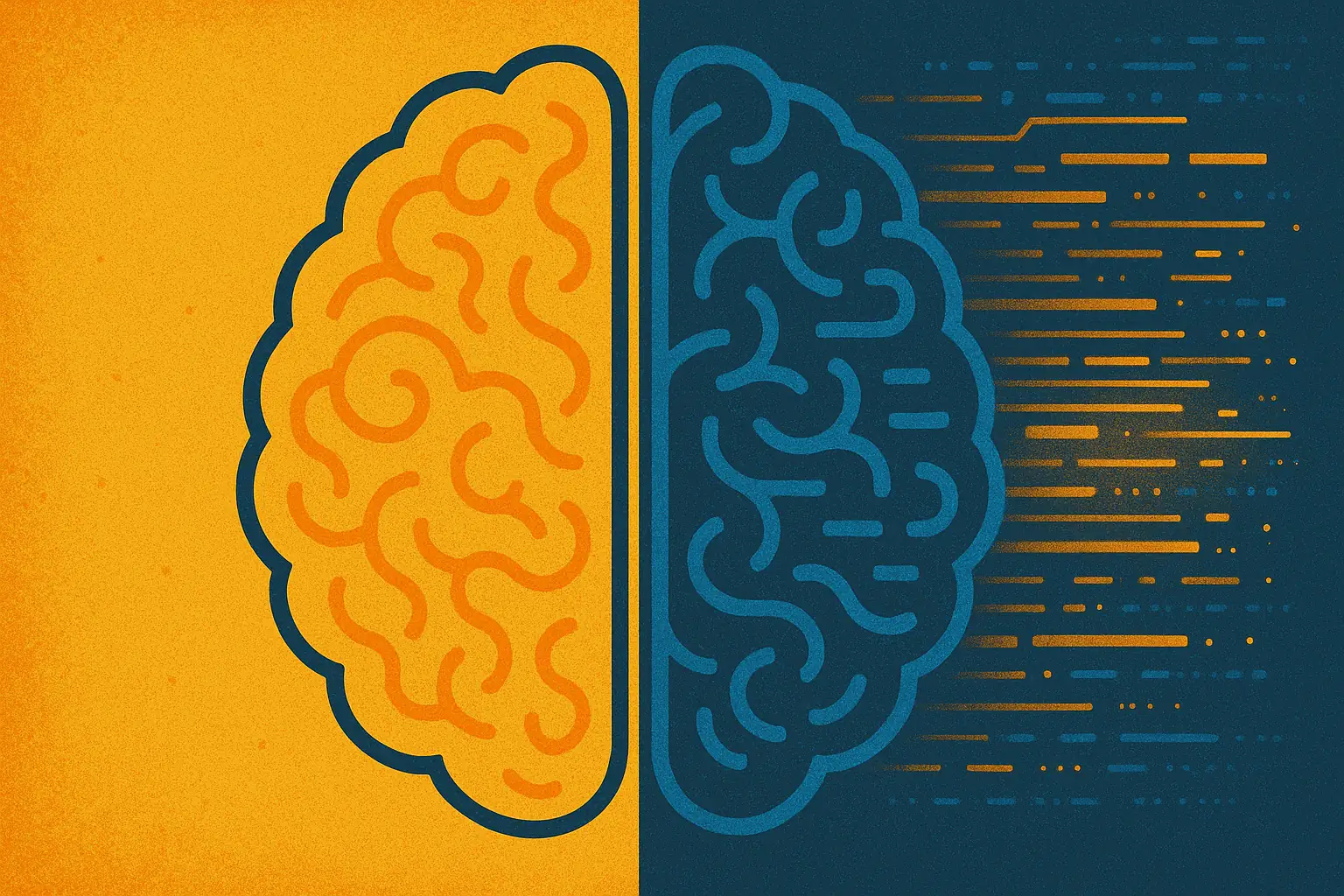Introduction
Large Language Models, often referred to as LLMs, are AI systems trained on vast amounts of text data to understand, generate, and process human language. Their relevance lies in their versatility. From powering generative AI applications like chatbots to assisting robots in decision-making, these models influence industries worldwide. Understanding what are Large Language Models is crucial for professionals in AI, business leaders exploring gen AI solutions, and everyday users relying on computer systems enhanced by AI.
In this article, we will define Large Language Models, explain their mechanics, trace their origins, highlight their applications, and provide resources to deepen your understanding. By the end, you will gain a clear overview of why LLMs matter and how they are transforming the future of artificial intelligence
Definition

Large Language Models are advanced AI models trained to process and generate natural language. They operate using deep learning, particularly transformer architectures, which allow them to analyze context, predict words, and generate coherent sentences. Simply put, they simulate human-like conversation and text creation by learning from massive datasets. When discussing what are Large Language Models, synonyms often appear in AI communities, such as text generation systems, neural language models, or AI language processors. All describe systems designed to mimic linguistic intelligence by leveraging statistical patterns.
These models differ from traditional algorithms. Instead of relying on rigid programming, they adapt dynamically by processing billions of words. They recognize relationships between words, sentences, and paragraphs, giving them remarkable fluency in conversation and problem-solving. In artificial intelligence, Large Language Models are regarded as foundational technologies. They underpin gen AI tools, contribute to the development of smarter robots, and integrate into broader computer systems. Their definition is not limited to text generation; it also extends to reasoning, summarization, and decision-support.
Detailed Explanation
Large Language Models function through a combination of neural networks, training data, and probabilistic reasoning. At their core, they use transformer architecture, which breaks down text into tokens and processes them simultaneously rather than sequentially. This design makes them faster and more efficient than earlier models like recurrent neural networks. The training process involves feeding the model immense amounts of text, from books and websites to technical manuals and social media. By analyzing patterns, the model develops the ability to predict the most likely word in a sequence. Over billions of iterations, it learns context, style, tone, and semantics.
To illustrate, consider a user asking an AI system about blockchain. The model retrieves contextual knowledge about distributed ledgers, digital currency, and trading. It then generates a coherent explanation that resembles what a human expert might say. This highlights how Large Language Models support crypto account managers, researchers, and developers alike. Exploration and exploitation are crucial to their design. The model explores possible responses while exploiting patterns it has already mastered. This balance ensures accuracy while maintaining creativity.
Examples of Large Language Models in action include GPT-series models, Google’s PaLM, and Meta’s LLaMA. These systems drive generative AI platforms, fuel innovation in customer support, and even assist in medical research.
History or Origin
The history of Large Language Models reflects the evolution of AI technology. Early attempts in natural language processing (NLP) relied on rule-based systems, where computer systems followed fixed instructions to parse sentences. These lacked adaptability and often failed in real-world applications.
The introduction of statistical models in the late 20th century improved results, but it was deep learning that transformed NLP. Around 2017, researchers at Google introduced the transformer architecture, described in the paper “Attention Is All You Need.” This breakthrough became the foundation of modern LLMs. By 2018, models like BERT advanced contextual understanding, while OpenAI’s GPT series demonstrated the power of generative AI.
Each iteration scaled up in size and capability, pushing boundaries of what AI systems could achieve. Tech companies integrated them into trading platforms, blockchain analysis tools, and digital assistants. Governments and businesses began exploring them for communication, data analysis, and even policy research.
Applications or Uses
Large Language Models find applications across diverse sectors, making them vital in artificial intelligence today.
Customer Support
Many companies deploy LLM-powered chatbots to answer queries, provide troubleshooting, and offer personalized recommendations. These systems reduce wait times, operate 24/7, and continuously learn from interactions, making them smarter and more effective over time. By handling repetitive tasks, they free up human agents to focus on complex cases, ultimately improving overall customer satisfaction.
Finance and Trading
LLMs analyze blockchain data, monitor cryptocurrency markets, and suggest trading strategies. They assist in managing crypto wallets and reducing risks in volatile environments. For crypto account managers, these tools are invaluable because they combine real-time updates with predictive insights, helping traders adapt quickly. Their ability to process vast amounts of financial information makes them essential for modern trading systems.
Healthcare
Doctors use AI systems powered by LLMs for summarizing medical records, suggesting treatment options, and providing patient-friendly explanations of complex terms. They also help researchers by scanning huge datasets of clinical trials or journal articles to discover new treatment possibilities. By making healthcare data more accessible, LLMs enhance both professional efficiency and patient care.
Education
Students and teachers benefit from tools that explain concepts, generate study guides, and create interactive learning experiences. LLMs can provide personalized tutoring, adapt content to the student’s level, and offer examples that make abstract topics easier to grasp. This democratizes access to education and bridges gaps for learners worldwide.
Creative Content
Generative AI platforms produce music, stories, or scripts, enabling artists to experiment with new formats. Writers use LLMs to brainstorm ideas, while musicians and filmmakers explore AI-driven inspiration for their projects. These systems not only support creativity but also allow for faster prototyping of artistic concepts.
Robotics
Robots integrate LLMs to better understand commands, adapt to real-time environments, and enhance human-machine collaboration. Whether it’s in manufacturing, logistics, or healthcare, robots that leverage language models can interact more naturally with people and adjust to changing situations with greater flexibility.
Business Intelligence
Enterprises apply LLMs to analyze documents, extract insights, and support decision-making across computer systems. They can sift through massive corporate datasets to detect trends, streamline operations, and uncover opportunities for growth. As a result, companies make better-informed strategic decisions with fewer delays.
Security
Large Language Models assist in identifying suspicious blockchain activity, protecting crypto accounts, and reducing fraud risks. Their capacity to detect unusual patterns and flag anomalies makes them essential in financial security and cybersecurity. Organizations rely on these systems to minimize threats while maintaining trust with users.
Their broad applicability demonstrates why understanding what are Large Language Models is crucial. They are not confined to niche tasks; instead, they form the backbone of modern AI solutions that impact daily life and professional industries.
Resources
- OpenAI: What are Large Language Models?
- Google AI Blog: Understanding Transformer Models
- MIT Technology Review: The Rise of Generative AI
- Stanford University: CS324: Large Language Models
- IBM: AI and Natural Language Processing

